Japan: Where the 2020 Olympics are played
source: StadiumDB.com [TS]; author: Tomasz
 Football at the Olympics began two days before the official opening ceremony. Women's teams from Great Britain and Chile entered the field first. Men started their tournament the day after.
Football at the Olympics began two days before the official opening ceremony. Women's teams from Great Britain and Chile entered the field first. Men started their tournament the day after.
Advertisement
At the Summer Olympics, ladies football tournament is taking place between July 21 and August 6 and men's competitions are to last just as long, only it will start a day later. 16 national sides take part in men's tournament and 12 teams in women's games. Due to postponement of the event by one year, FIFA decided to change rules and admit U24 players, i.e. athletes born on or after January 1, 1997. There is no age limit in women's matches.
Women's competitions will be held at 7 stadiums in 6 cities. For men, the number of cities is similar, but players are to have one less facility at their disposal. This is because ladies' final is scheduled to take place at Olympic Stadium, the main arena of the 2020 Olympics. It will be the only football fixture at this facility. Men are to play their final in Yokohama.
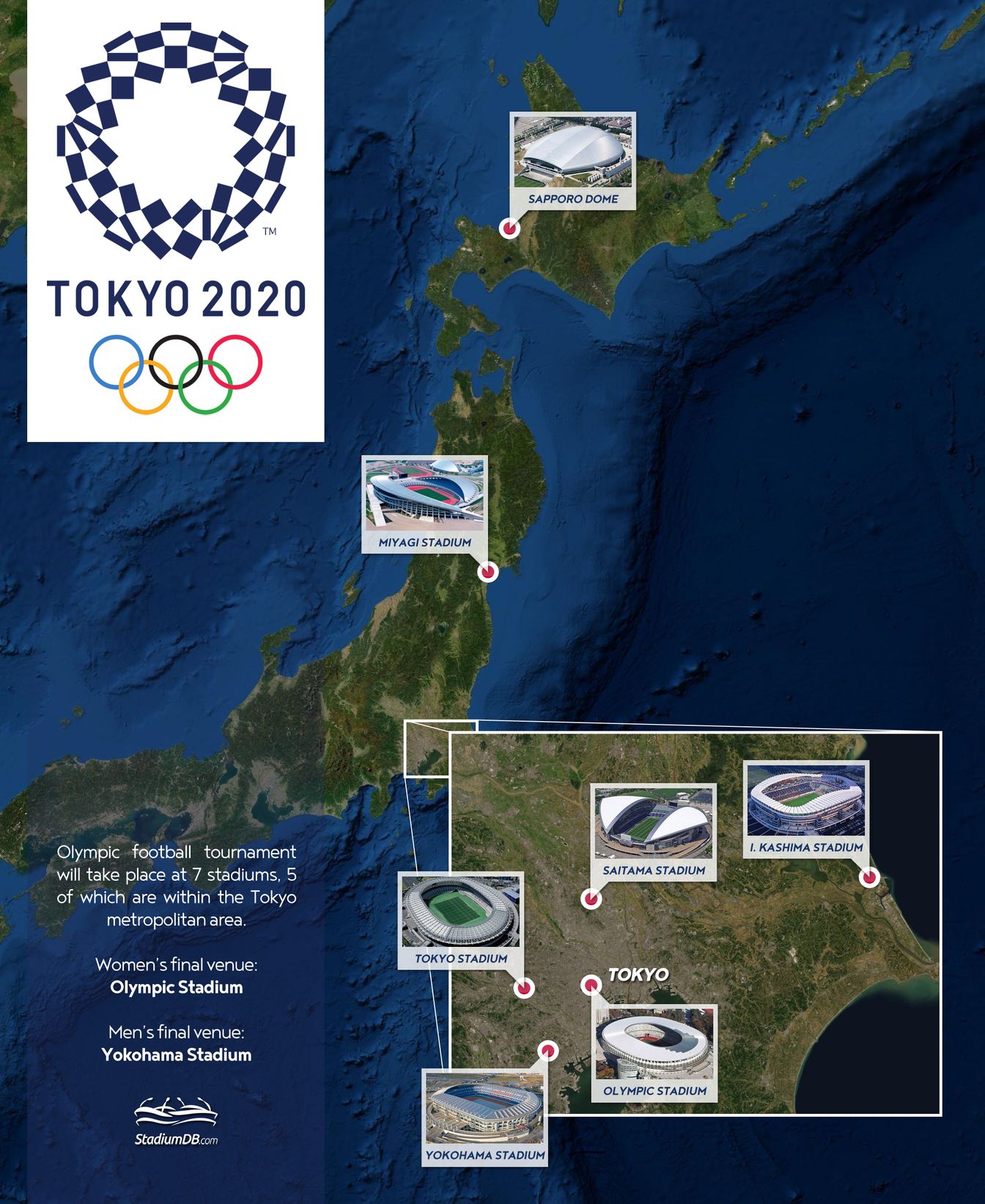
The remaining 6 venues will host both women's and men's matches. These stadiums are: Tokyo Stadium, Saitama Stadium, Yokohama International Stadium, Ibaraki Kashima Stadium, Miyagi Stadium and Sapporo Dome. First four are in the Tokyo metropolitan area and last two are in the north of the country. Miyagi Stadium in Rifu / Sendai is located about 365 kilometres from Tokyo and Sapporo Dome as much as 1150 kilometres from the capital.
The Olympic Games will be played at only one new facility (Olympic Stadium) and the other six are the venues that existed before Tokyo was chosen to host the Games. Of these six, as many as five were arenas for the 2002 World Cup, excluding Tokyo Stadium. By decision of the Japanese government, matches will be played behind closed doors.
Olympic Stadium
Japan's new national stadium stands out the most, as it will be the arena for the opening and closing ceremonies. It was put into operation in November 2019. Opaque facade was scrapped in favour of open concourses with shrubs and trees planted on their edges. All concourses extend outwards and are equipped with eaves, emulating a pagoda-style temple. The roof was also made with a large share of wood.
Tokyo Stadium
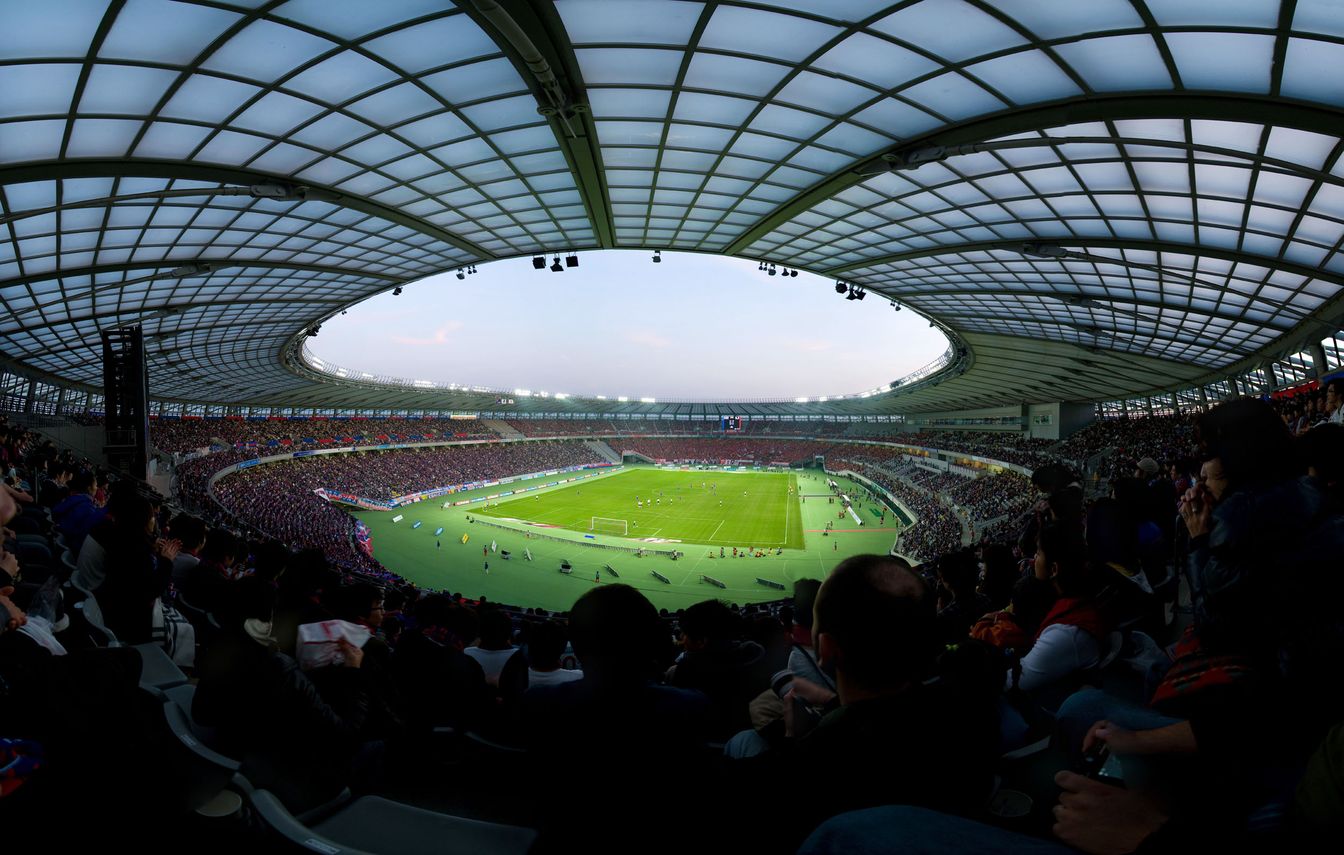 © Spitfireap
© Spitfireap
The facility was commissioned 20 years ago. This is where FC Tokyo and Tokyo Verdy play their home games. The two-storey stands are covered with a Teflon and polycarbonate roof. The lower tier can seat half as many spectators as the upper one. Interestingly, the northern end of the stadium is adjacent to Chofu Airport.
Saitama Stadium
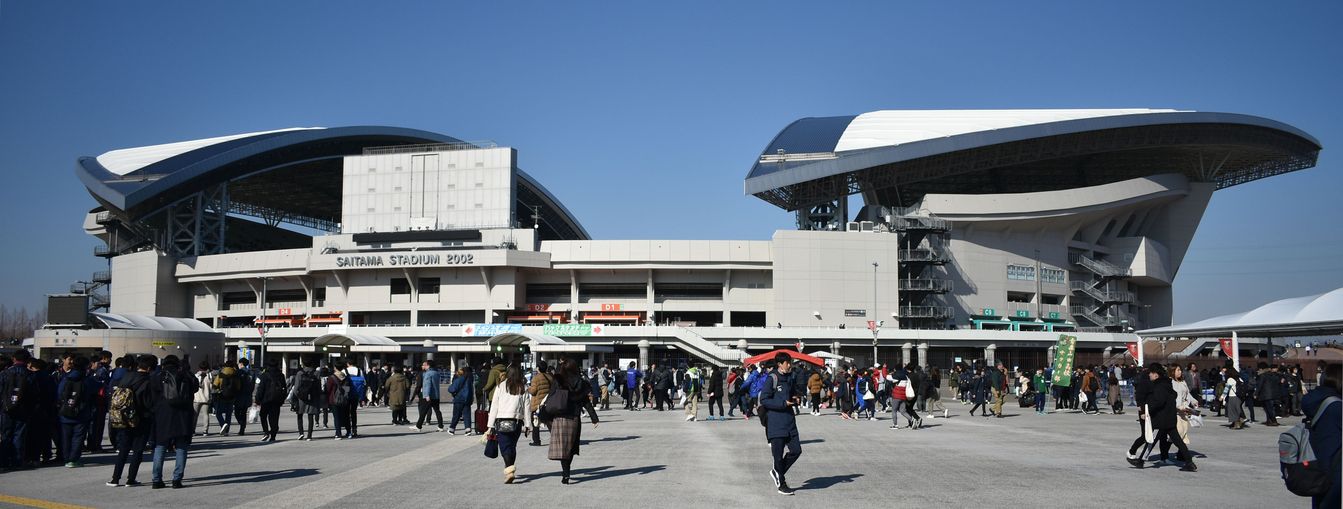 © 江戸村のとくぞう
© 江戸村のとくぞう
The iconic part of its design is the roof. Two vast ‘arched triangles’ spread across 29,000 square metres above the west and east stands (their surface is almost half as big as the entire floor space of the building). Only the north and south ends are open and single tiered, occupied by large contingents of local (north) and travelling fans (south).
Yokohama International Stadium
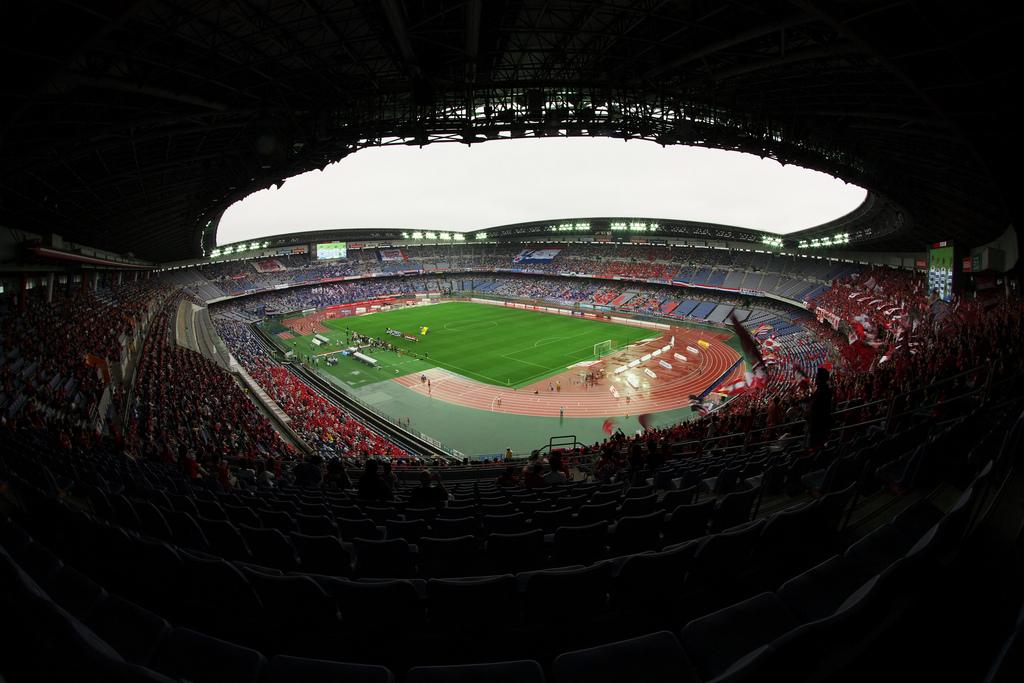 © Sh@tei
© Sh@tei
At the moment, it is the largest stadium in Japan. The venue is multifunctional, as two rings of stands are surrounded by an athletics track. The final of the 2002 World Cup between Brazil and Germany was held at the facility. Moreover, it repeatedly hosted games of the FIFA Club World Cup.
Ibaraki Kashima Stadium
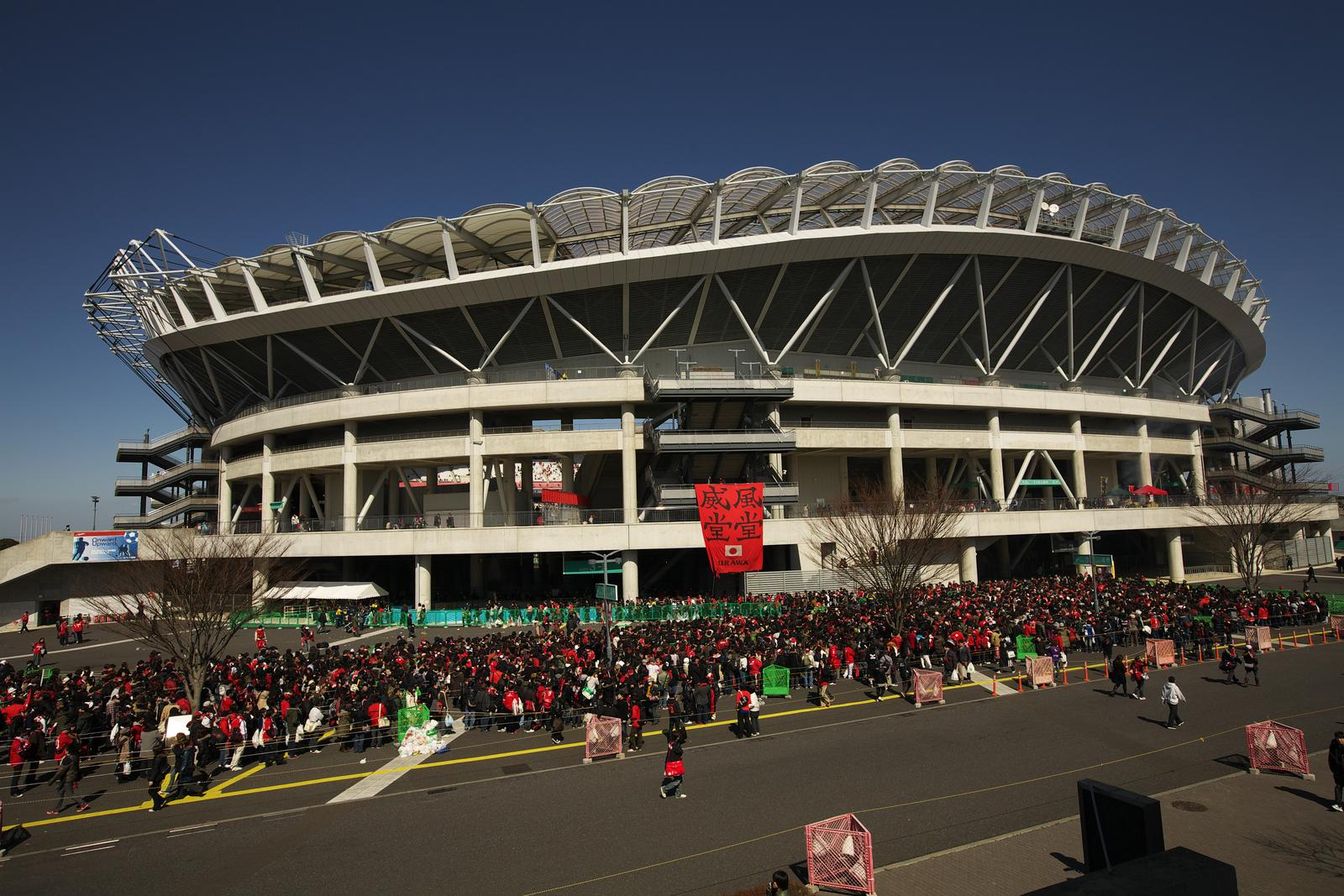 © Sh@tei
© Sh@tei
A typical football venue with stands on four sides and without built-in corners - this was what it looked like until 1999, when the expansion for the World Cup began, which increased the capacity from 15,000 to over 40,000. Works began with the removal of the original roof and the extension of the second level of stands around the perimeter, including corners.
Miyagi Stadium
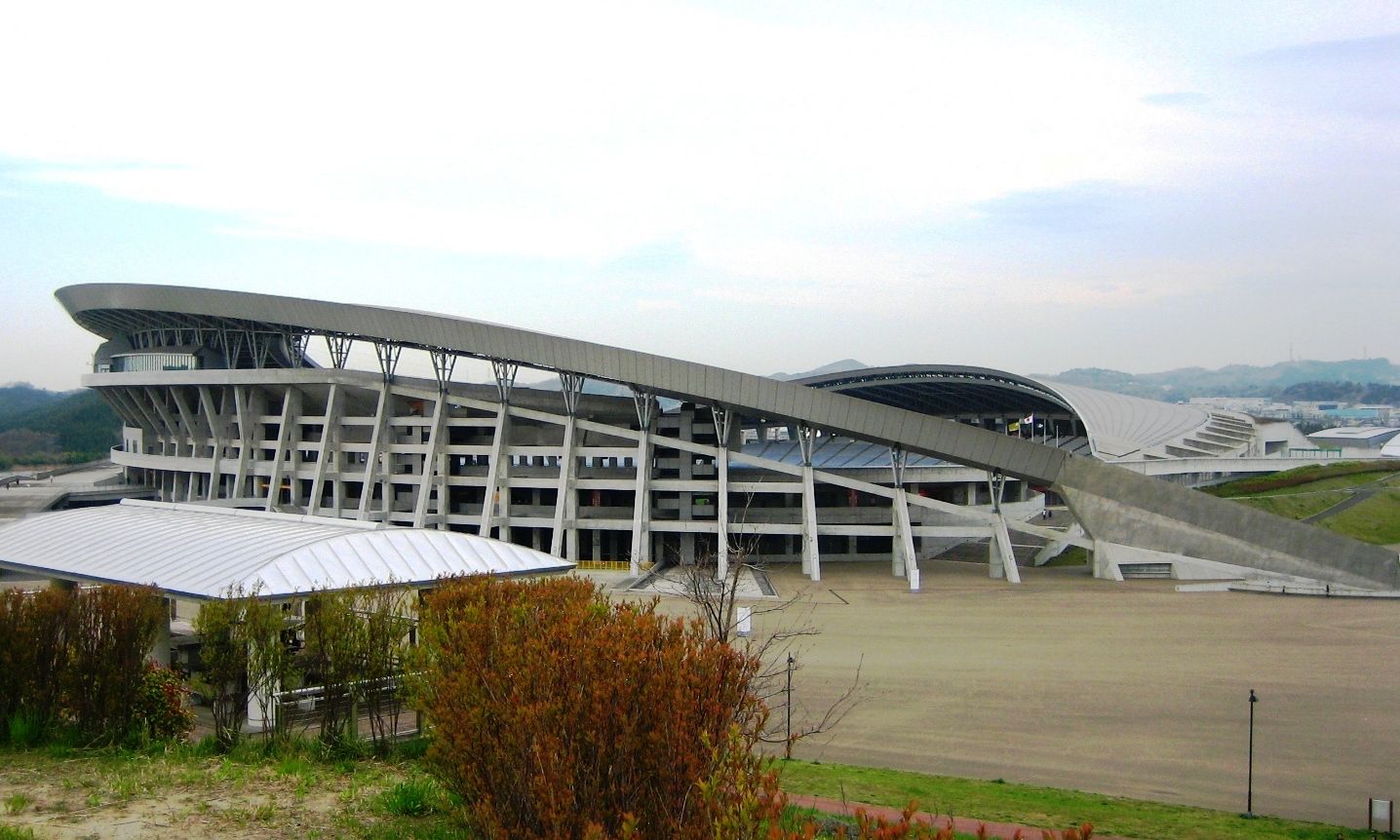 © Kernel
© Kernel
A multi-purpose stadium with a crescent-shaped roof that extends beyond the outline of the stands. These are references to the images of Date Masamune - the feudal ruler of these lands. Only the main stand has two floors. The south and north tribunes are not roofed.
Sapporo Dome
The arena has a permanent roof over the pitch and stands, as well as the playing field that can be moved outside. It is a compromise between climatic conditions and two most important sports, which are football and baseball. Natural grass always rests outside when it is not needed for matches.
Author: Tomasz Sobura
Advertisement
 StadiumDB
StadiumDB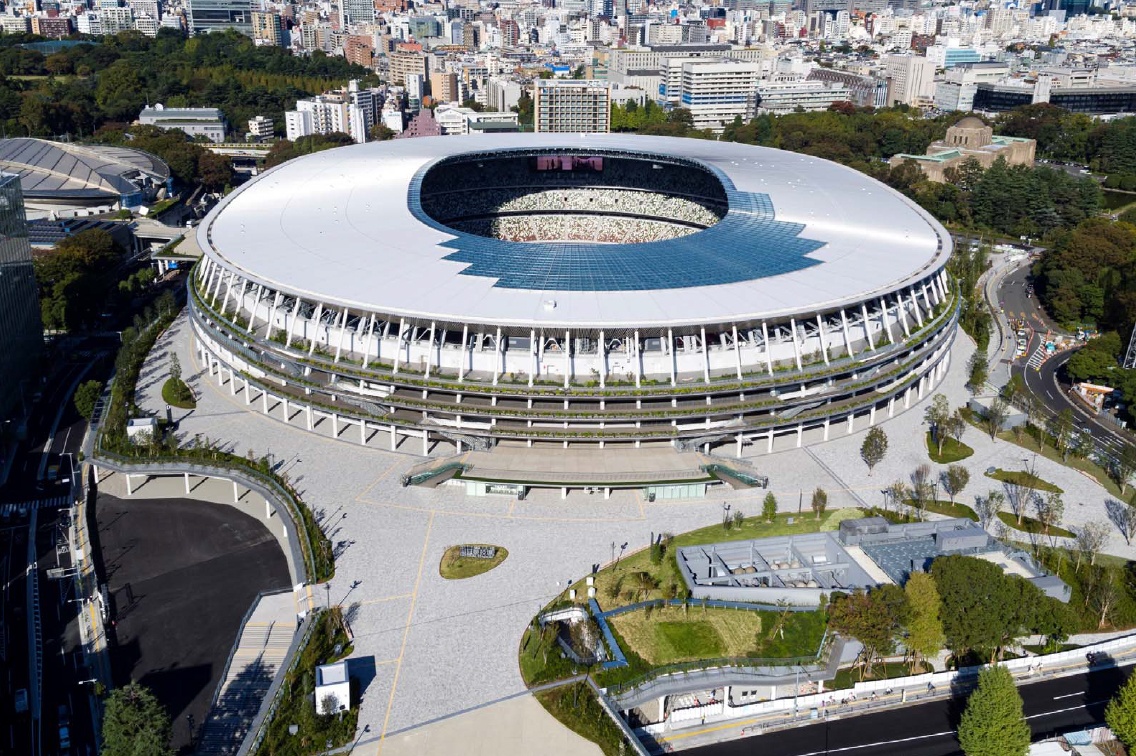 ©
© 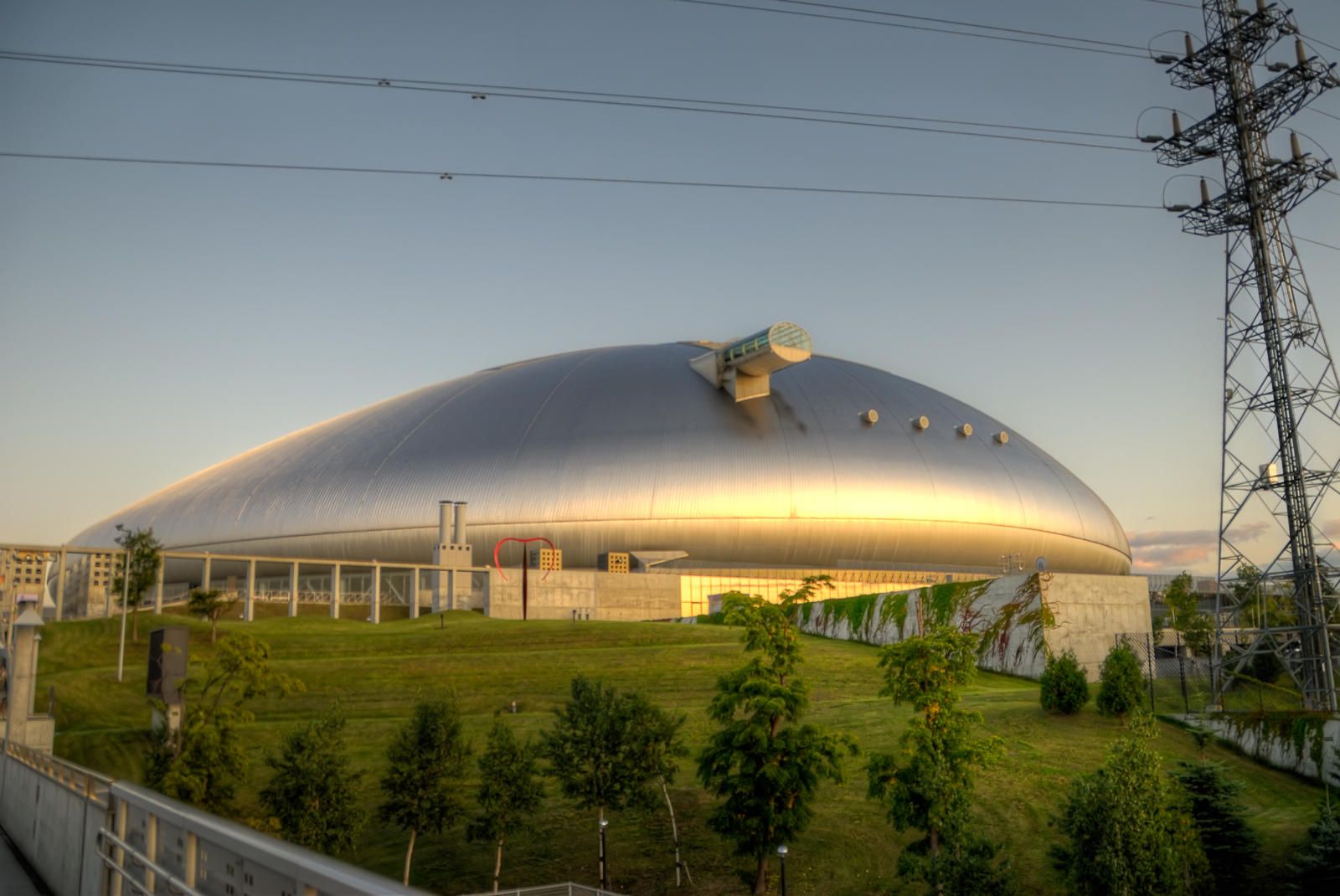 ©
©